-
Posts
103 -
Joined
-
Last visited
Content Type
Profiles
News and Information
Tutorials
Product Reviews
Supplier Listings
Articles
Guitar Of The Month
Links and Resources
Forums
Gallery
Downloads
Posts posted by mikevirok
-
-
Ok everyone; they are going on Ebay tomorrow night at around 11pm EST.
-
I am thinking it might be around $60 to ship to the UK.
-
Thanks guys;
I'm probably going to experiment with all of the above options in the coming months...
-
I thought that the scarfed joint wasn't isolated to the headstock, but the joint itself rested somewhere underneath the nut...
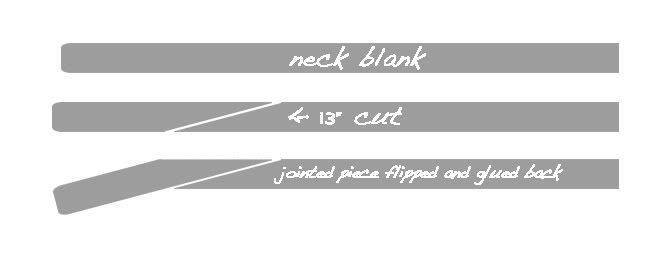
That's what I had assumed a scarf joint (like an Ibanez neck) looked like. My question pertains to how to cut that 13-degree slice accurately without needing to over-sand and inadvertently make a shorter headstock or neck....
-
Is there a tutorial on scarf joints in constructing a guitar neck? Or can anyone lead me the right way to successfully making a guitar neck with a scarf jointed headstock?
-
-
That McCarty set or bolt on neck? Also, some more pics of the McCarty could be cool, I'm slightly intrigued.
Chris
Set neck on both guitars. I'll post more pics in a couple of minutes...
-
-



The only issue I can see possible in terms of problems with making a shallow neck pocket would be that the angle of the string across the bridge saddles may change.... but I think you may have something here...
-
I don't think so. If it's non-recessed, the bridge will stick up too far to properly intonate the guitar if the neck is not pitched. I think that was what you were asking, right?
-
I lowered the prices:
McCarty - $1000
EG SE - $300
-
I have a strip of Lyptus donated to me by one of my instructors from this summer in Atlanta. It's nice in appearance and finishes really well (he used it on a bass neck). I am going to use it for a 3 piece neck myself. He mentioned it was a pleasure to work with, but I cannot vouch for it's workability or tone..
-
The piece you are looking for is called the threaded bushing. I know that StewMac carries a replacement FloydRose set of the bushings & screws, but it might not work on the Fender-style 2 point trem.
-
Well, for me it would be the Taylor. I have owned many a guitar in the past 10 years and I until recently I didn't realize how lovely the Taylor company actually is in their careful production and continuing care of their instruments. If you have ever had a Taylor acoustic neck pulled off of the body for a re-set, you know what I am referring to...
I have lived in this small apartment for about a year now where I am unable to play loudly through an amplifier and I don't like using headphones due to their concentrated noise-into-ear aspects over a long period of time, so I usually find myself strumming on my acoustic. I also removed myself from the live hard-rock circuit to focus on song-writing in my own little singer-song-writer world. I bought a Taylor 314 Koa back last November and I have yet to regret that purchase. It has been and incredible writing tool and is built solidly. I can't say the same thing about some of the other guitars I have owned in the past. -
I am another of the jealous ones here.... damn nice score man...
-
If you want a template for the inlays themselves, I have a laser-cut fretboard template of a PRS neck that includes the bird inlays. I don't need it (since I don't do inlay work and I refuse to copy a PRS any longer), so I'd be glad to snap some pics and sell it to you if you'd like. The template is made of fiber-board (heavy duty) and is precision laser-cut. Let me know!
-
i mean how many times do you need to take the neck off??
if you take it off there needs to be a good reason like its broken
if you taking ur neck off every other week you just foolin around
Everytime I want to take one of my strats over-seas and put it inside a regular suitcase.
The threaded inserts come in real handy for that. For me, the inserts are worth putting in, even if the neck is only taken off once every ten years. Phil Jacoby once told me he would put them on all new guitars, if he were building them.
I have a couple mahogany bolt-on necks that I found. the wood is more flakey around the top of the screw holes than they would probably be if the neck was made of maple.
...I had imagined that much of this information for mikevirok is going toward building guitars for customers and figuring out what will work and what won't to avoid complications in customers parts failing. Being a builder you must assume that there will be a customer out there that will take the neck off 3 times a day to clean the pocket, LOL. It's just safer to make sure you won't have a neck wood that will strip should a customer take it off a number of times for whatever the reason. Anyhow, thats kinda what I got from the question, I don't think it was in regards to his personal instrument or his amount of neck disassembly...
Thanks J; I am looking at this from a builder/seller standpoint. My own personal preferences are now secondary to the customers' needs/wants. I'll be looking into the threaded inserts for my next builds.
-
I'm right there with you in terms of the art degree. I'm also a college graduate with a BFA in painting.
-
Mahogany, while commonly used for set neck & neck through designs, is rarely seen on bolt-on designs. Warmoth offers bolt-on mahogany necks along with everything else in a bolt-on configuration, but I have rarely seen a manufacturer offer a production model with a bolt-on mahogany neck. Correct me if I am wrong on that observation, but based on the properties that I have observed mahogany as possessing would it be correct in assuming that a mahogany bolt-on neck is a bit too soft to hold up to the bolted-on strength requirements that less-soft woods commonly seen on production model necks have? Would the risk of using a mahogany bolt-on neck be that the screws would work a bit loose over time with applied tension from the strings? Sure, any bolt on neck can be prone to these weaknesses, but my question is if mahogany in general is just on that borderline of "yes" or "no" for bolt-on construction.
-
Here's my entry.... it's my first ever guitar!!!
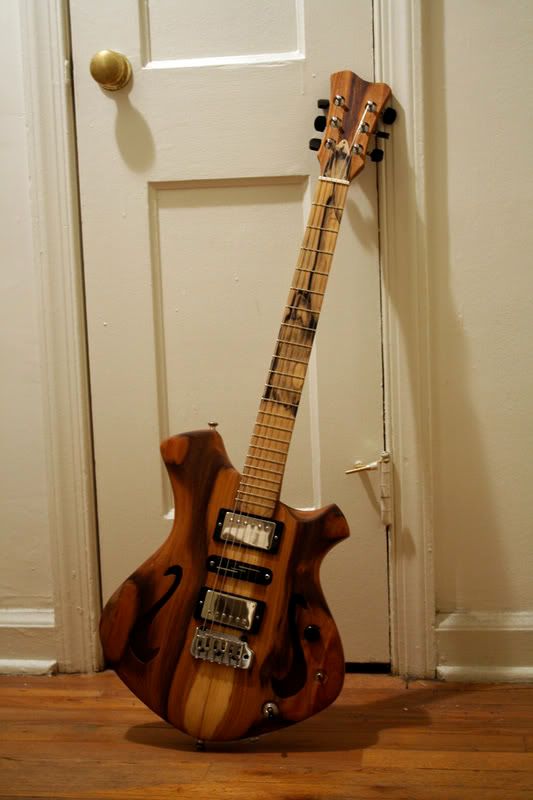
NAME: “CMCg-I” (named after my girlfriend, Christina)
Body: 2 piece Spanish Cedar back, 2 piece Canary Wood top (semi-hollow)
Neck: 3-piece Mahogany (deep set), “Black & White” Ebony fret-board
Hardware: Grover locking tuners, Hipshot™ Fulcrum tremolo, Dunlop strap-locks.
Pickups: PRS McCarty (neck & bridge), Seymour Duncan Vintage Rails (middle)
Controls: master volume, “tap/on” switch that acts as a push/pull coil tap for the neck and activation of the middle pickup, 3-way toggle switch
Extras: Canary-wood tremolo cavity cover plate, bone nut, matching truss-rod cover cut from same wood as the fret-board (black & white ebony).

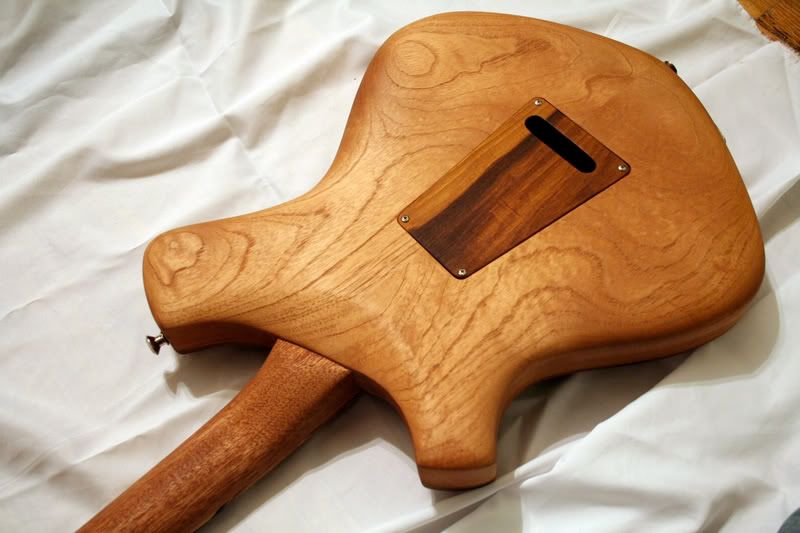
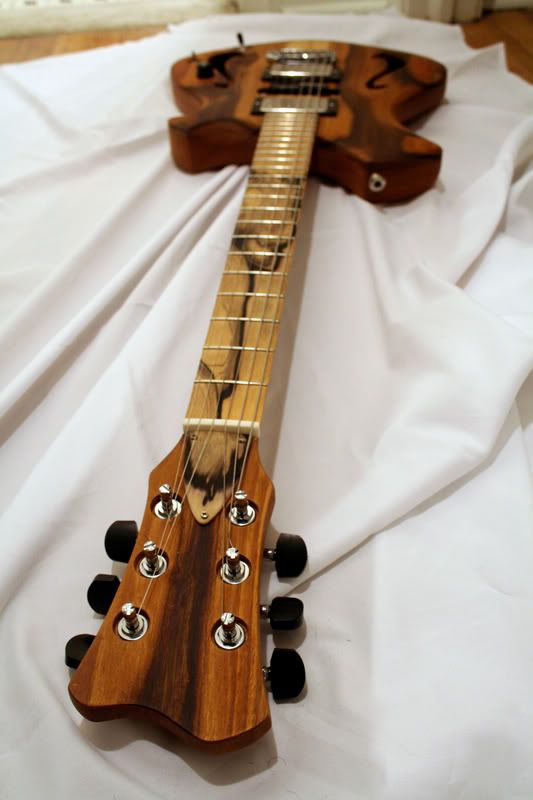
So, I set out to build a semi-hollow body guitar with a tremolo. I decided to merge everything that I had come to love about my favorite guitars and build my own "signature" guitar.
Everything about this guitar is hand-made (in terms of the wood aspects). The neck was carved by had from 3 pieces of mahogany, then set deep into the semi-hollow Spanish cedar body. The fretboard is "Pale Moon Ebony" or "Black & White Ebony". The pattern was extraordinary when I spotted it at a local exotic hardwood store in Atlanta, GA. I had to have it for this build! The guitar body's top wood comes from a piece of Canary wood that was told to have been used on a crate that came from Mexico in the 1960's or 80's (came from the same exotic wood shop as the Ebony).
I chose to finish this project with Danish oil, since I wanted to preserve the natural qualities of the woods used and not have a shiny surface.
Again, I am quite happy with my first build and I am glad to be able to share it with you all!!!
-
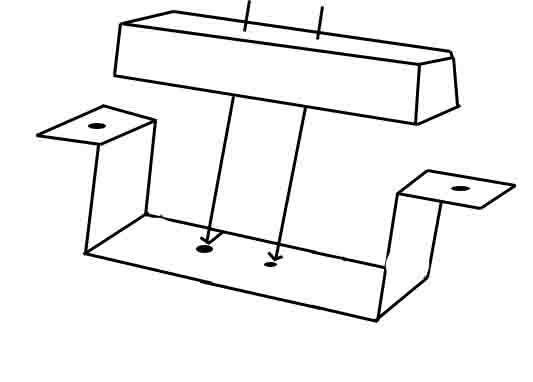
You'll need to make a kind of bracket to mount the p90 on...
-
Alder is pretty light in terms of weight, and it also accepts finish quite well. I was leery of working with it due to its soft, easy to dent properties since I am into oil finishes and not lacquer or poly. The sound of the instrument is worth it though!
-
Damn, if only this came a week earlier and I was living on the opposite side of the country...
...although, I wouldn't be opposed to relocating for such an opportunity to have a shop space... still, my new lutherie job here in New Jersey awaits!
-
I like the Hipshot "baby-grand" bridge you used on the guitar. Quick question: did you have to pitch the neck severely to use this bridge? I wanted to use it on an upcoming build, but I need to do some extensive planning before ordering it and pitching the neck is ig enough challenge with the tools that I will have to work with.
Great job though!!!



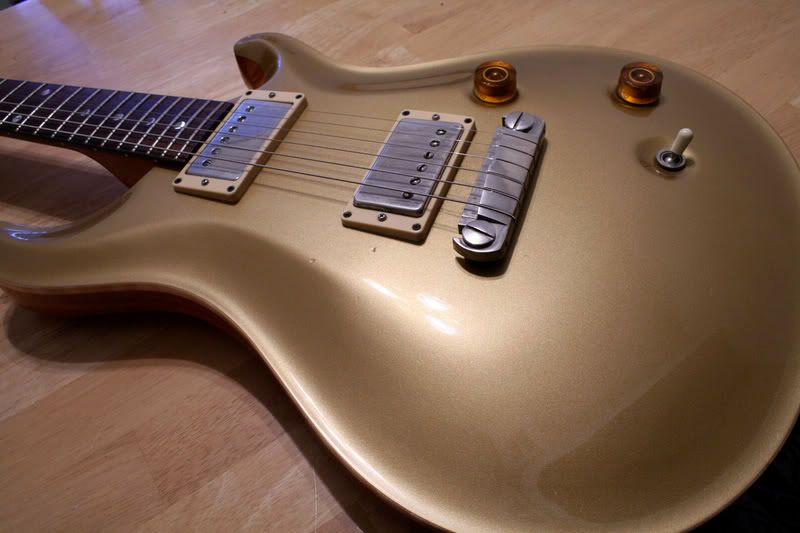
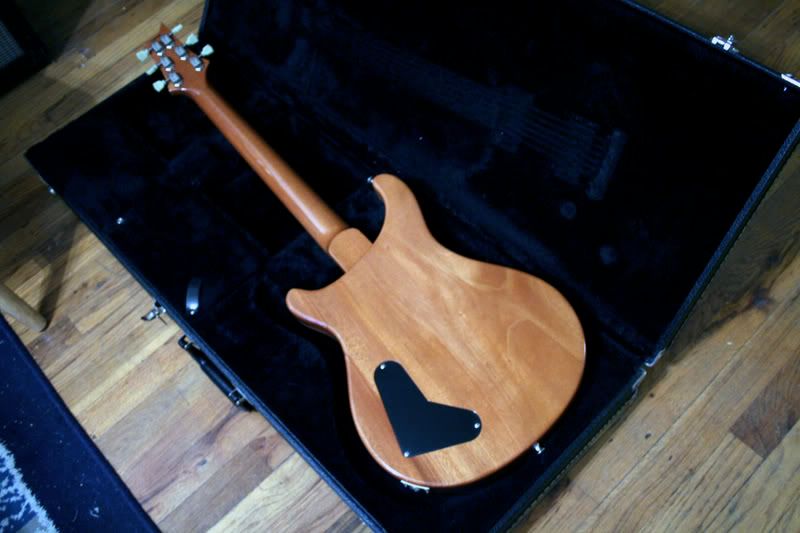
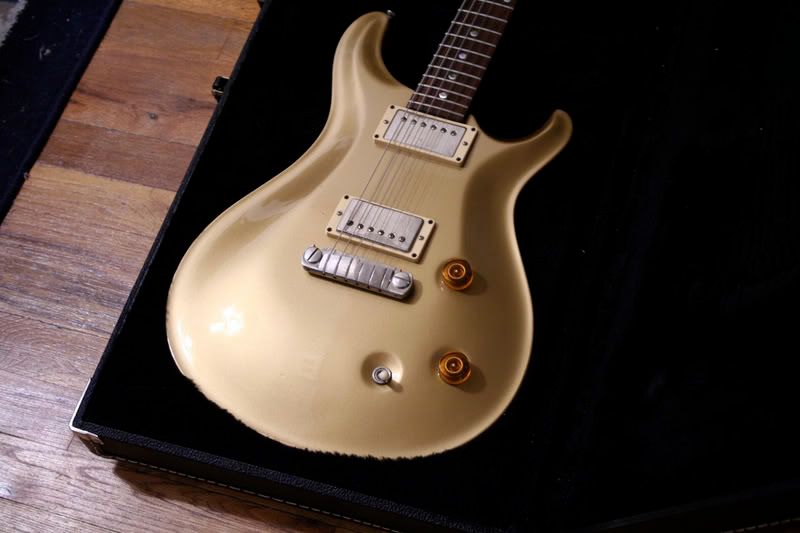
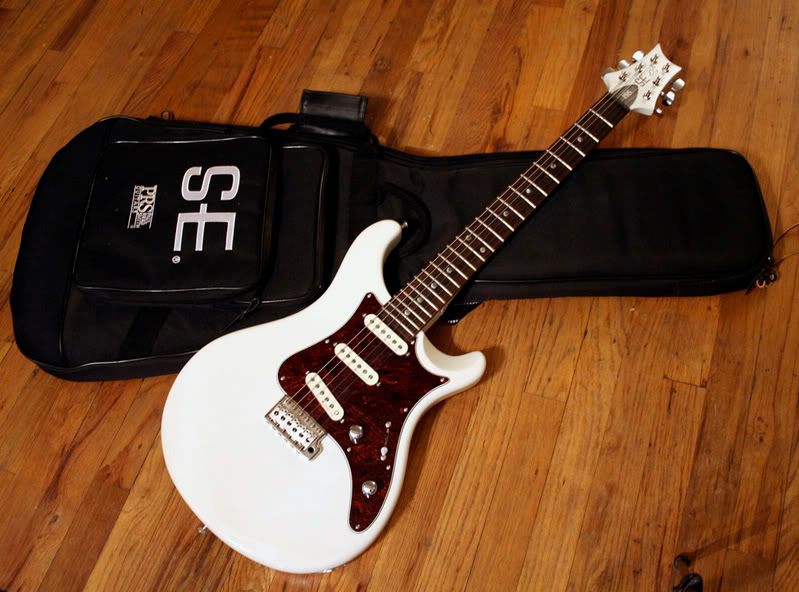
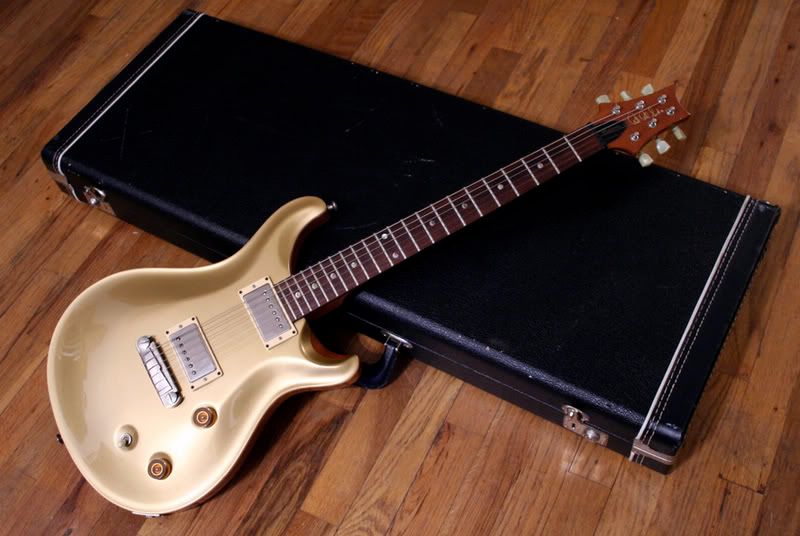
Two Prs Guitars For Sale...
in The Marketplace
Posted
Sorry, $1000 is the lowest I could possibly go...